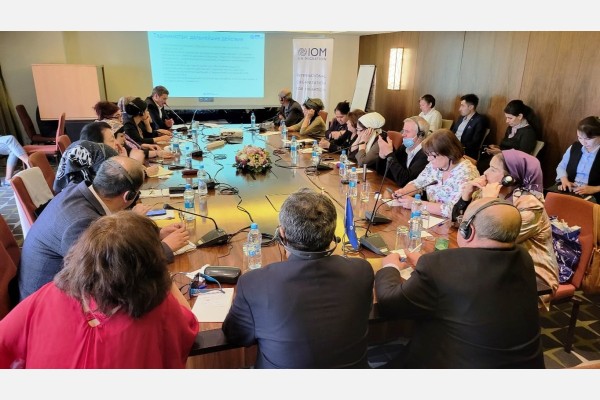Repository of Practices

Supporting Government of Tajikistan with tracking and monitoring of displacement and population mobility
Secondary GCM Objectives
Dates
Type of practice
Summary
The Displacement Tracking Matrix (DTM) is IOM's tool to track and monitor displacement and population mobility. It is a regular and systematic tool to understand a movement flow, needs of displaced population and their vulnerabilities. DTM was piloted in Tajikistan within the regional Covid-19 response project in 2020-2021 with the focus on assessing impact of Covid-19 pandemic on returned migrants and their households. The experience and results stimulated interest of key government partners on migration governance. Considering this, IOM organized series of workshops for partners to enable them to have a closer look at DTM and explore its potential application in different context.
On 6 and 7 April 2022, an IOM Expert hold a workshop on the Displacement Tracking Matrix (DTM). The participants were UN agencies, government structures and civil society organizations. The workshop was dedicated to DTM implementation, including methodological framework, DTM components, information management system etc. DTM is well aligned with national and global frameworks. Specifically, it is in line with the first objective of the GCM “Collect and utilize accurate and disaggregated data as a basis for evidence-based policies”. The application of the tool in the country will assist decision-makers to obtain an accurate data about mobility flow and needs of population and respond to crisis, conflict, or other context in a fast and effective manner. In addition, IOM Expert hold bilateral meetings with key government structures working on migration issues as well as civil society organizations.
Organizations
Main Implementing Organization(s)
Detailed Information
Benefit and Impact
Key Lessons
Recommendations(if the practice is to be replicated)
It would also be recommended to bring the people who work on the migration area and statistics.
Innovation
Additional Resources
Date submitted:
Disclaimer: The content of this practice reflects the views of the implementers and does not necessarily reflect the views of the United Nations, the United Nations Network on Migration, and its members.
More Related Practices:
- A Journey of a Thousand Mile Begins with a single Step: Djibouti’s Experience in Strengthening Migration and Displacement Data Governance
- The Counter-Trafficking Data Collaborative (CTDC)
- Migrant Domestic Workers Rights on the Threshold of Czech Households
- Libro: “A 20 años de la Ley de Migraciones”
- Gestión coordinada de la DTM en la frontera Chile-Bolivia
Peer Reviewer Feedback:
*References to Kosovo shall be understood to be in the context of United Nations Security Council resolution 1244 (1999).
Newsletter
Subscribe to our newsletter.